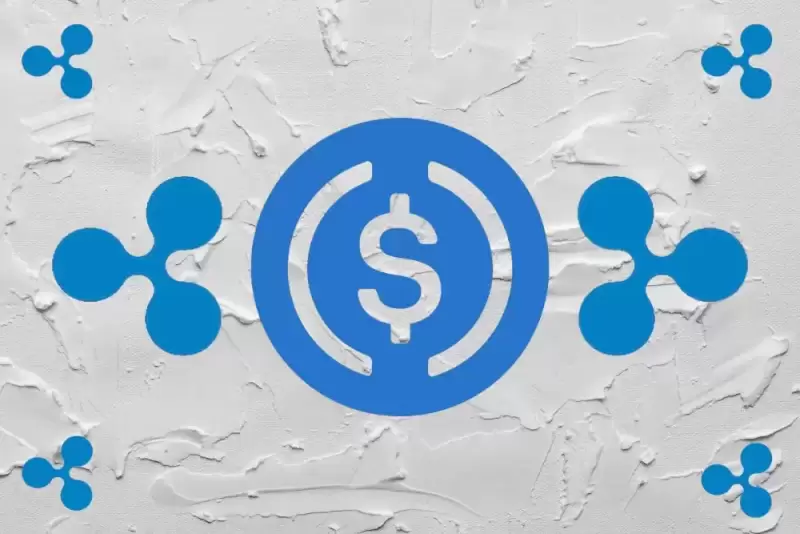 |
|
 |
|
 |
|
 |
|
 |
|
 |
|
 |
|
 |
|
 |
|
 |
|
 |
|
 |
|
 |
|
 |
|
 |
|
Cryptocurrency News Articles
Mastercard Is Betting on Stablecoins and How It Might Change How Money Moves
May 02, 2025 at 10:03 am
In today's Finshots, we explain why Mastercard is betting on stablecoins and how it might change how money moves.

If we were to picture crypto and traditional finance in the same room, we’d probably imagine two neighbours who awkwardly avoid eye contact. One is all about rules, audits and centralised control while the other one is about decentralisation, anonymity and big price swings.
But that’s changing. Because now Mastercard has decided to open its doors to stablecoins. Yes, the same Mastercard sitting quietly on your debit or credit cards and handling over 170 billion card transactions a year.
It’s partnered with some big crypto companies — OKX, MetaMask, Binance, Crypto.com. These are nothing but cryptocurrency wallets and exchanges used by millions. And through Mastercard’s new partnerships, users of these platforms will be able to spend stablecoins at any of the 150 million merchants that accept Mastercard globally. Merchants don’t have to convert those coins to dollars or rupees. They can choose to settle directly in stablecoins.
And for someone new to this and nervous about sending money to a scary crypto address like 0x9A81cD12d6Ff... (the way crypto fund transfers work), Mastercard came up with a simpler solution called Crypto Credential. You know, like @monish.eth or @suman.matic. Much easier.
And just like that, a deeply traditional payments company has now decided to go full on stablecoins.
Which begs the question… Why now?
Let’s take it from the top.
First, let’s talk about stablecoins. These are digital tokens pegged to a real-world currency — typically the US dollar. The deal is simple: 1 stablecoin = 1 dollar. You give the issuer a dollar, they give you a stablecoin token. This could be anything from Tether (USDT), Circle (USDC), Ethena (USDE), etc. And when you return the token, they give you the dollar back.
So unlike Bitcoin, which can swing 10% in an hour, stablecoins are... stable. One coin equals one dollar. Always. And that makes them perfect for things like sending money, paying bills or settling trades. An easy way to understand them is to imagine a token that behaves like crypto (borderless, anonymous, decentralised, fast), but feels like cash.
And they’re catching on fast. Total stablecoin supply has grown from 2 billion in 2019 to over 200 billion in 2025. In 2024, the total transfer volume of stablecoins reached over $27 trillion. That’s more than Visa and Mastercard combined!
And it’s not just utility that’s driving this boom. It’s also the money behind the money.
See, when you buy a stablecoin, the issuer doesn’t stash your dollar under a mattress. They usually invest it in US Treasuries — safe government bonds that currently yield around 4%. So when a company like Circle (which runs the USDC stablecoin) is sitting on tens of billions of dollars in customer funds, that interest adds up fast. In fact, Circle made $1.6 billion last year. Just by parking customer funds in Treasuries. And today, stablecoin issuers like Circle and Tether are among the top 20 holders of US government debt.
And if all that wasn’t enough, the rules are catching up too.
Governments are bringing stablecoins under formal supervision. The US is working on legislation that would require issuers to be fully licensed, regularly audited and maintain 100% cash-equivalent reserves. Thailand’s SEC has even approved USDC and USDT for trading on local exchanges.
So there’s utility, regulation, momentum and a whole lot of money.
That’s the reason why Mastercard doesn’t want to miss this bus.
And it’s not alone. PayPal jumped in last year with its own stablecoin — PYUSD, and baked it into Venmo, PayPal checkout, and so on. But PayPal’s model is a bit of a walled garden. Everything happens within its own ecosystem.
Mastercard, on the other hand, is playing the role of the connector. It doesn’t want to issue a coin. It just wants to let you spend whatever stablecoin you already hold (like USDC, USDT, PYUSD) wherever you want.
And that seems like a clever move. Because you see, at its core, Mastercard is a payments facilitator. And stablecoins offer faster, cheaper, borderless payments — the kind that legacy systems just can’t match. If it doesn’t embrace this shift, it risks becoming irrelevant, especially with its competitor Visa working on its own stablecoin platform.
So yeah, it changes how money moves.
Then, this stablecoin shift also changes Mastercard’s fundamental architecture.
For decades, Mastercard has run on a closed payments network. You swipe your
Disclaimer:info@kdj.com
The information provided is not trading advice. kdj.com does not assume any responsibility for any investments made based on the information provided in this article. Cryptocurrencies are highly volatile and it is highly recommended that you invest with caution after thorough research!
If you believe that the content used on this website infringes your copyright, please contact us immediately (info@kdj.com) and we will delete it promptly.

























































